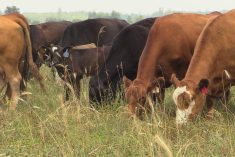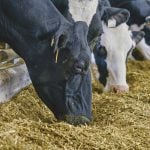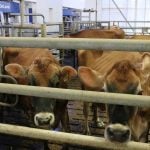Patience is a virtue, the old saying goes. Unlike the past few years, feedlot operators have been rewarded for waiting and there is no clear signal the market has any incentive to deviate from the current direction. Western Canadian feeder markets were trading $5-$8 below week-ago levels as larger numbers come onstream in all weight categories. Fleshier cattle characterized most sales and buyers showed no mercy for any discountable feature. Adverse weather also played a role, with Mother Nature dosing a large region of the prairies with excessive rains and snow.
Read Also

U.S. grains: Soybeans set 15-month high on U.S.-China trade deal hopes
Chicago soybean futures reached their highest in 15 months on Tuesday, briefly topping $11 a bushel on optimism that the U.S. could reach a trade deal with China as leaders from both countries are expected to meet in South Korea on Thursday.
We can’t underestimate the pessimism in the field these days. The industry is still reeling from Western Feedlots’ decision to halt operations, which most analysts consider one of those “black swan” variables for the Canadian feeder markets. There is no textbook explanation for cow-calf producers, except that the U.S. cattle herd as expanded faster than anticipated. Larger supplies and prolonged negative feedlot margins have resulted in extremely weak demand. It’s simple economics, but that’s the most difficult to forecast.
In central Alberta, steers averaging 850 lbs. with medium flesh were readily trading in the range of $165-$168; fancier larger-frame heifers averaging 800 lbs. were in the range of $153-$157 in the same region. Prices were relatively flat across the Prairies and the “Alberta premium” appeared to evaporate. U.S. buyers were more active in Manitoba but this had little influence on the price structure. U.S. feeder prices experienced a week-over-week decline of $8-$10 on average.
The calf market was quite diverse and rather hard to define, with unweaned bawlers absorbing heavier discounts in this environment. Larger-frame medium-flesh steers weighing around 700 lbs. traded in the range of $182-$185; semi-weaned 550-weight steers readily traded from $186-$188. Unweaned heifers weighing around 600 lbs. were quoted from $155 to $157.
— Jerry Klassen is manager of the Canadian office for Swiss-based grain trader GAP SA Grains and Produits. He is also president and founder of Resilient Capital, which specializes in proprietary commodity futures trading and commodity market analysis. Jerry owns farmland in Manitoba and Saskatchewan but grew up on a mixed farm/feedlot operation in southern Alberta, which keeps him close to the grassroots level of grain and cattle production. Jerry is a graduate of the University of Alberta. He can be reached at 204-504-8339.

















